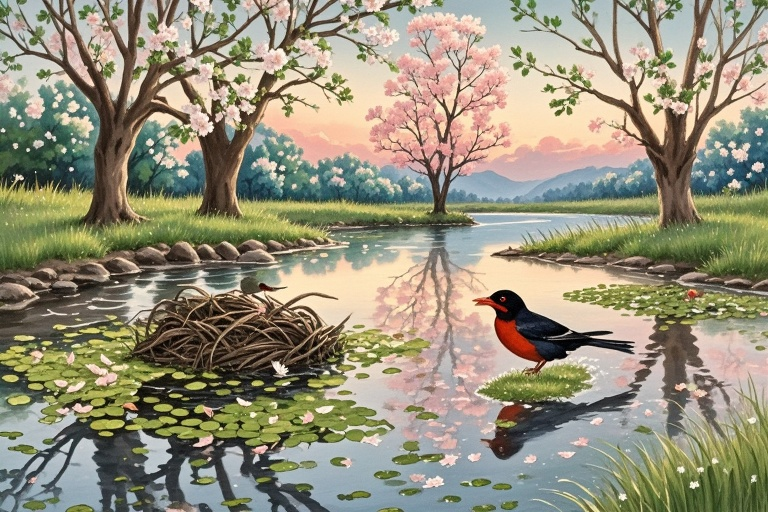Snow swirls outside my window tonight, clinging to the glass like a stubborn reminder of winter’s grip. Yet as I trace its icy patterns, my thoughts drift stubbornly toward spring—toward muddy banks and sunlight filtering through cottonwood trees. Isn’t it funny how the mind rebels against gray skies and grim headlines? These days, my escape plan doesn’t require a plane ticket or a vacation request. It begins with a pair of muddy boots and a willingness to embrace what most people avoid.
When Mud Becomes a Gatekeeper
The watershed near my home transforms each spring into something gloriously inconvenient. Melting snow swells the river until it tumbles over mossy stones, swallowing trails and leaving behind knee-deep muck. While hikers grumble about “ruined paths,” I’ve come to cherish these seasonal obstacles. That chocolatey sludge? It’s nature’s velvet rope, keeping casual visitors at bay.
Last week, I waded through ankle-numbing water to reach a flooded grove. Bare feet sinking into silt, I felt the cold punch through my soles—a visceral reminder that wild spaces demand participation, not passive observation. My toes curled around smooth pebbles as dragonflies darted overhead, their iridescent wings catching the light. This, I realized, is where smartphones lose service and human voices fade into birdsong.
The Secret Life of Spring Pools
What most see as obstacles, life celebrates as opportunity. Temporary vernal pools—those “annoying puddles” interrupting trails—are actually nurseries. Kneeling beside one, I counted:
- 47 tadpoles darting through duckweed
- 3 salamander egg masses clinging to twigs
- 1 determined water shrew diving for insects
A wood duck couple glided past, their midnight-blue feathers gleaming. They’d chosen this flooded thicket precisely because humans find it inaccessible. Nearby, fresh bear tracks pressed into mud revealed a midnight feast on early skunk cabbage shoots.
The Paradox of “Protection”
This brings me to the logging trucks.
Our county recently approved a “forest health initiative” that’s stripped hillsides bare, leaving erosion gullies where ferns once flourished. Officials call it wildfire prevention. I call it a bulldozed wasteland. Yet here in the watershed’s soggy heart, nature thrives because we’ve labeled it “too messy” for development. The irony stings: the spaces we dismiss as impractical often shelter what’s most vital.
Walking Gently, Listening Deeply
I’ve adopted a ritual these past three springs: leaving my hiking boots at the trailhead. Barefoot, I notice things shoes dull—the spongy give of decomposing leaves, the electric chill of snowmelt streams. My pace slows. My gaze lowers. A red-legged frog becomes a marvel; a patch of marsh marigolds, a masterpiece.
Does it solve climate change? Of course not. But it rewires how I interact with the land. When your bare toe brushes a tadpole-filled pool, “protection” shifts from abstract policy to visceral responsibility.
Why Wildness Needs Our Indifference
The watershed teaches a counterintuitive lesson: sometimes, the best way to cherish nature is to leave it slightly uncomfortable. Unpaved. Unpredictable. A place where phones die and shoes get soggy. These aren’t flaws—they’re defenses.
As I write this, snow still blankets the ground. But somewhere beneath the frost, skunk cabbage buds push upward, preparing to melt their way through ice. Soon, the river will rise again, washing away human traces. I’ll be there, shoes in hand, celebrating the glorious inconvenience of it all.

